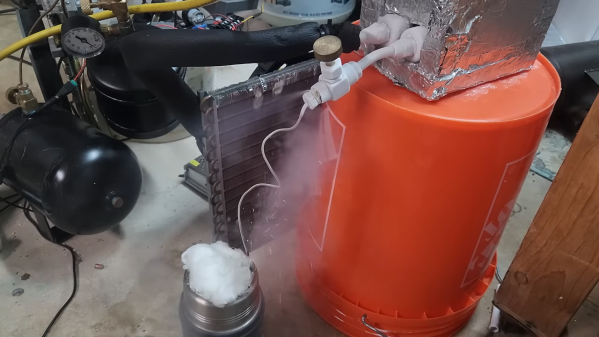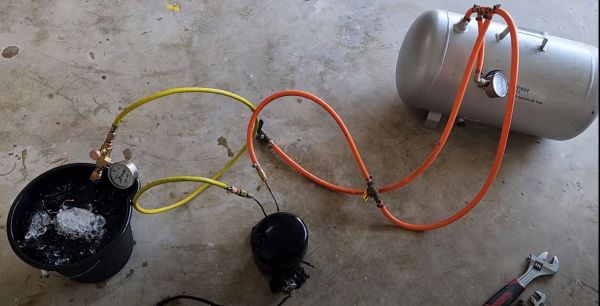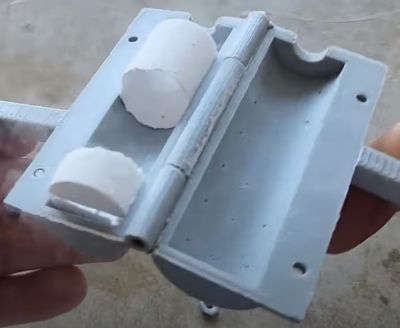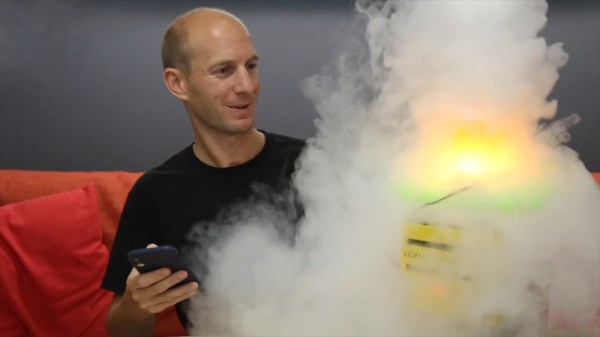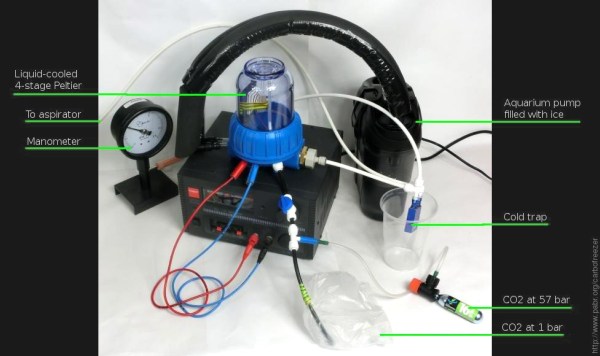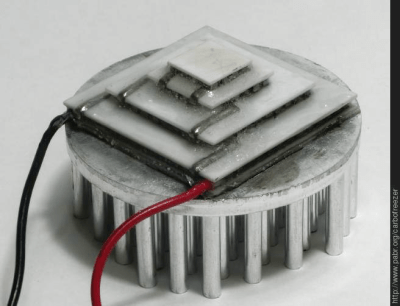Summer has settled upon the northern hemisphere, which means that it’s time for sweet, sweet strawberries to be cheap and plentiful. But would you believe they taste even better in freeze-dried format? I wouldn’t have ever known until I happened to get on a health kick and was looking for new things to eat. I’m not sure I could have picked a more expensive snack, but that’s why we’re here — I wanted to start freeze-drying my own strawberries.
While I could have just dropped a couple grand and bought some kind of freeze-drying contraption, I just don’t have that kind of money. And besides, no good Hackaday article would have come out of that. So I started looking for alternative ways of getting the job done.
Dry Ice Is Nice
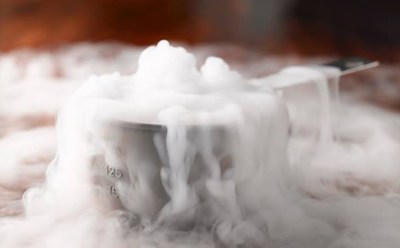
Early on in my web crawling on the topic, I came across this Valley Food Storage blog entry that seems to have just about all the information I could possibly want about the various methods of freeze-drying food. The one that caught my eye was the dry ice method, mostly because it’s only supposed to take 24 hours.
Here’s what you do, in a nutshell: wash, hull, and slice the strawberries, then put them in a resealable bag. Leave the bag open so the moisture can evaporate. Put these bags in the bottom of a large Styrofoam cooler, and lay the dry ice on top. Loosely affix the lid and wait 24 hours for the magic to happen.
I still had some questions. Does all the moisture simply evaporate? Or will there be a puddle at the bottom of the cooler that could threaten my tangy, crispy strawberries? One important question: should I break up the dry ice? My local grocer sells it in five-pound blocks, according to their site. The freeze-drying blog suggests doing a pound-for-pound match-up of fruit and dry ice, so I guess I’m freeze-drying five entire pounds of strawberries. Hopefully, this works out and I have tasty treats for a couple of weeks or months. Continue reading “Can You Freeze-Dry Strawberries Without A Machine?”


